Great Lakes' worst invasive species ranked in new study, from zebra mussels to grass carp
(FOX 2) - With close to 200 aquatic invasive species roaming the Great Lakes, the vitally important region remains one of the most populated by fish, plants, mussels, and more that are not originally from the area.
With some research labeling it one of the most invaded regions in the world, the Great Lakes are under continuous threat by the likes of blood-sucking eels, fast-spreading mussels, and common reeds that release toxins allowing them to outcompete native plants.
To help better understand which of these pose the greatest threat and why, scientists at various Michigan-based research groups ranked the top 10 species that have the greatest impact on the Great Lakes.
At the top aren't the scariest looking creatures, but that have spread like wildfire through the Great Lakes. Zebra and quagga mussels' spread has resulted in the extinction of native populations of mollusks while creating headaches in pipelines.
Meanwhile, the parasitic fish known as the sea lamprey feeds on other fish while leaving them vulnerable to disease.
There are also alewives, which inhabit a unique characteristic of having predators that hunt them. Many invasive species are capable of spreading because of a lack of predators. However, their bodies contain elevated levels of an enzyme that can harm the species that eat them.
The research paper, titled "The Great Lakes’ most unwanted: Characterizing the impacts of the top ten Great Lakes aquatic invasive species" scored every identified nonindigenous species across two categories: Environmental and Socio-economic impacts.
Under those two groups were six sub-categories that range from impacts on environmental health, competition, predator-prey relationships, and water quality, as well as impacts on human health, infrastructure, and economy.
See the full list of the top 10 invasive species by impact on the environment below:
Zebra Mussel
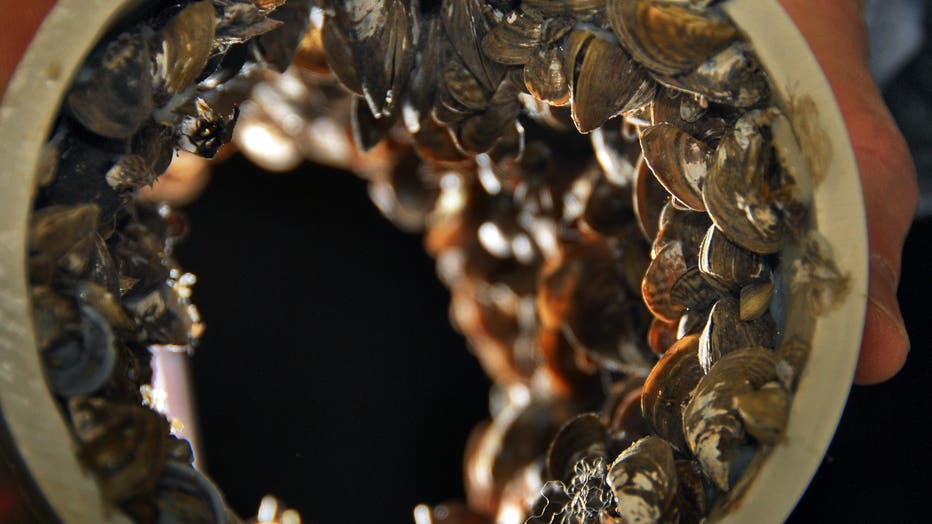
Times Union staff photo by John Carl D'Annibale: Daniel P. Molloy, Director of the Field Research Laboratory of the Division of Research & Collections of the New York State Museum, in Cambridge, displays a sample of pipe encrusted with zebra
Species type: Mollusk
Continent of origin: Eurasia
How it was introduced: Ballast water
Zebra mussels earned the highest environmental impact score due to their impact on environmental health, competition, water quality, while outcompeting other mussels. In addition to creating problems for native mussels, their spread has also led to an increase of pollution as well as natural toxins.
Zebra mussels can store the chemicals in their tissue, which magnifies their concentration and create problems for anything that consumes it.
Zebra mussels are more damaging than quagga mussels because they are more commonly found in nearshore, shallow water habitats, which is where other species grow.
"As a result, zebra mussels as a whole have greater exposure to nearshore contaminated sites and have more opportunities to deliver these contaminants up the food chain," the paper said.
Quagga Mussel
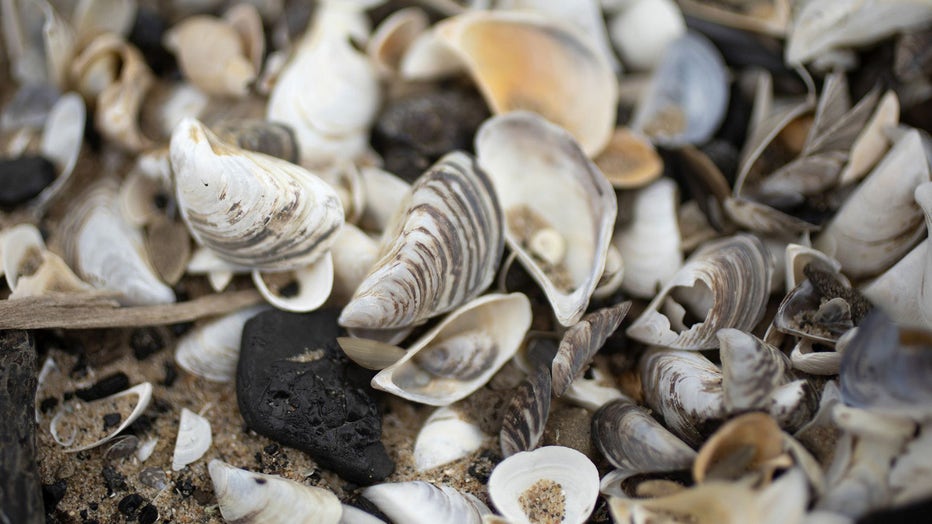
Quagga and zebra mussels shells, along with other shells and debris, clutter the dunes area at Montrose Beach on April 13, 2021, in Chicago. Both types of mussels are considered invasive species. (Erin Hooley/Chicago Tribune/Tribune News Service via
Species type: Mollusk
Continent of origin: Eurasia
How it was introduced: Ballast water
Just behind zebra mussels are quagga mussels, which don't hurt environmental health as much, but still impact competition, while hurting water quality, and the physical ecosystem.
Just like the other invasive mollusk, quagga mussels are capable of facilitating the movement of toxins up the food chain. Birds, fish, and other predators that eat them also consume the toxins they produce.
This transfer of toxins has led to an increase in death of some aquatic birds.
Alewife
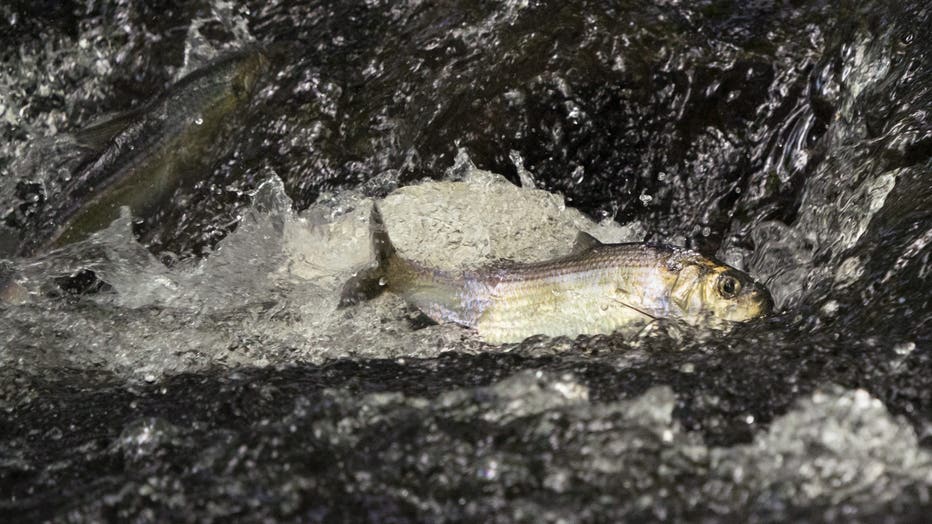
WESTBROOK, ME MAY 30: Alewives make their way through rapids in Mill Brook at the northern fish viewing pool in the Mill Brook Preserve in Westbrook on Monday, May 30, 2022. (Staff photo by Gregory Rec/Portland Press Herald via Getty Images)
Species type: Fish
Continent of origin: North America
How it was introduced: Migrated through canal
Alewife has no impact on water quality or the physical ecosystem, but has been detrimental to other species that hunt them. This has led to negative impacts like salmon and lake trout, which feed on alewife.
Alewife have elevated levels of thiaminase in them, which is an enzyme that can degrade a vitamin in the fish that eat them, causing early death in predators. This led to a growth in alewife numbers, leading to further decline in native fish populations because the invasive species' predation of larvae.
Sea Lamprey
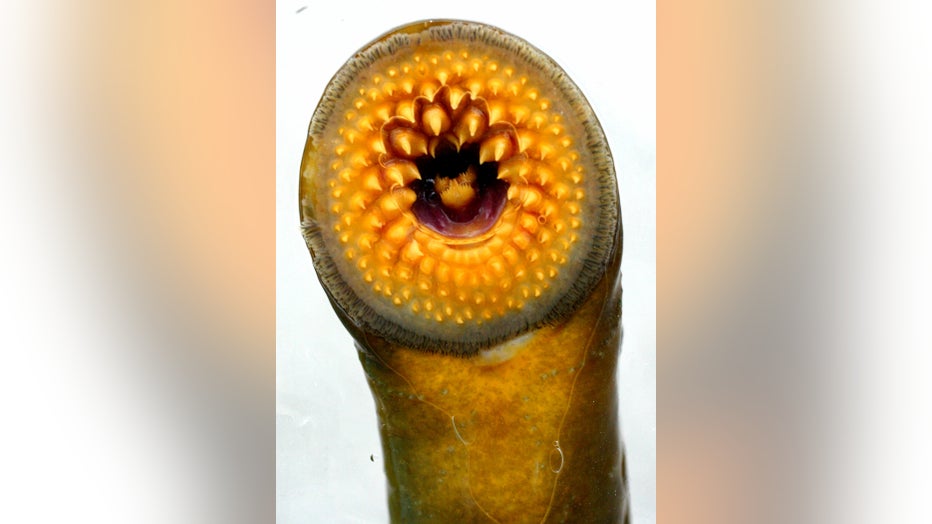
INVASIVE SPECIES SERIES -- MINEAPOLIS STAR TRIBUNE --The mouth of a mature sea lamprey - the area that attches to fish of the Great Lakes. (Photo by MARLIN LEVISON/Star Tribune via Getty Images)
Species type: Fish
Continent of origin: North America
How it was introduced: Migrated through canal
Resembling something out of a horror novel, sea lamprey use their mouths to latch onto fish and feed on their blood. It often results in their death. However, if the prey don't die from the loss of blood, they'll likely fall victim to secondary infections.
Lamprey are also detrimental to recreation and tourism due to their targeting of native lake trout and walleye.
Japanese Stiltgrass
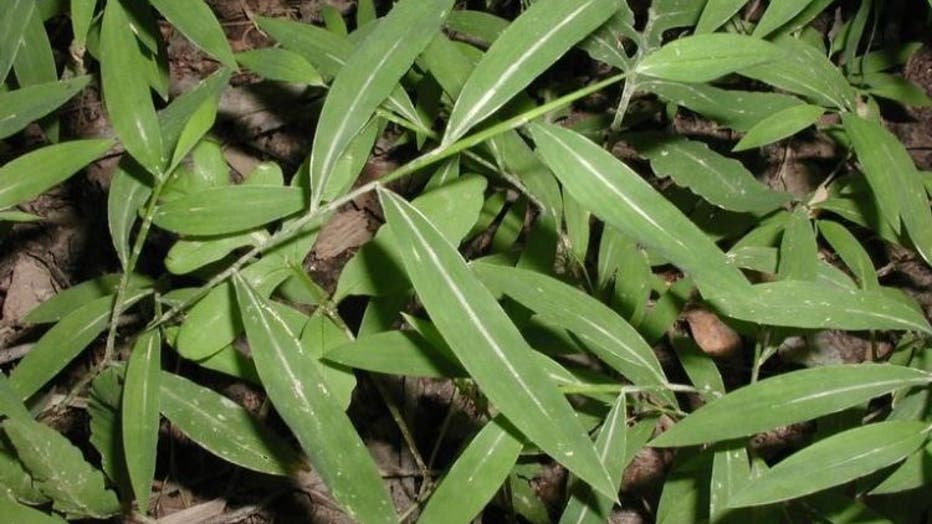
Photo via Bugwood.org
Species type: Plant
Continent of origin: Eurasia
How it was introduced: Shipment packing material
Japanese Stiltgrass pose a different kind of threat from the animals above because it enables the growth of pathogens like leaf blight disease while preventing seeds from native plants from growing.
The nonnative plant can also quickly outcompete existing vegetation because it can adapt to low light situations.
Stiltgrass has also been shown to have significant impacts on the physical ecosystem, modifying the local soil chemistry.
Grass Carp
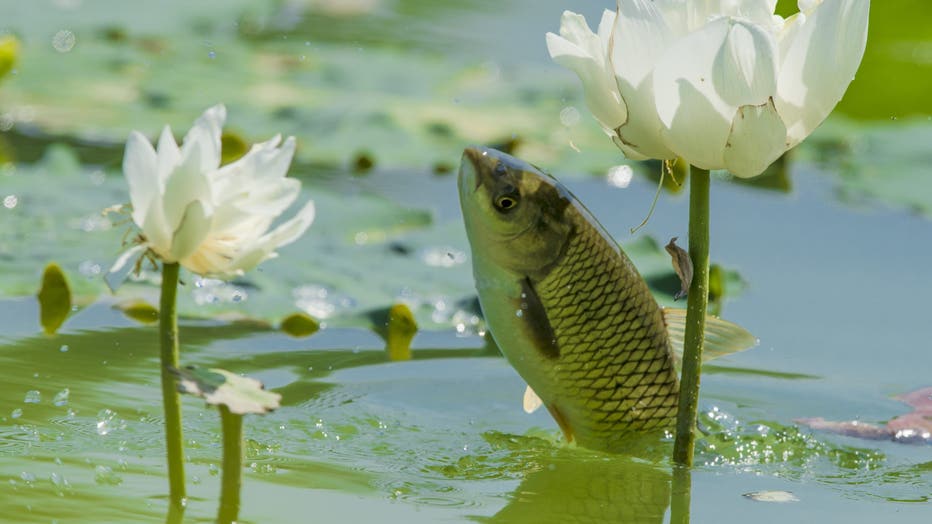
In September 2018 (Costfoto), under the blooming lotus, flocks of fish aimed at the lotus, quickly sprang up, grabbed the petals in their mouths and pulled them, which became a delicacy for the grass carp. (Photo credit should read Chengyue Zhang/Fut
Species type: Fish
Continent of origin: Asia
How it was introduced: Imported for aquaculture
Among the four carp that have worried wildlife managers ever since their emergence south of the Great Lakes, grass carp have already created problems in Michigan and the Great lakes as a known carrier of parasites and diseases.
These parasites can be transmissible to native fishes. They are also believed to be the source of Asian tapeworm.
Water Chestnut
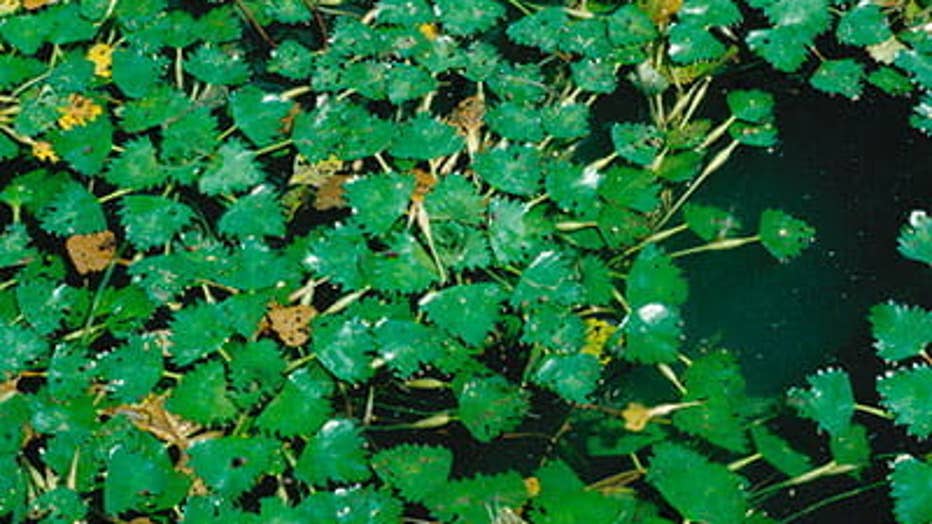
Michigan Department of Natural Resources
Species type: Plant
Continent of origin: Eurasia
How it was introduced: Intentional introduction
Water chestnut does a great job of outcompeting native plants while offering little to no nutritional benefit to native fishes. The fast-growing plant forms mats of vegetation that float on the water's surface, which can block sunlight from reaching the water table.
It also blocks the "air exchange between the water's surface and the atmosphere", which leads to the reduction of oxygen in water and making it harder for fisheries to survive.
Common Reed

EDGEWATER, MD- APRIL: 13 Invasive Phragmites grow throughout this environment in Edgewater, Maryland on April 13, 2021. KidsPost is examining less-known aspects of the Smithsonian in connection with its 175th birthday. SERC conducts research and host
Species type: Plant
Continent of origin: Europe
How it was introduced: Packing material and solid ballast
The common reed, which wildlife managers sometimes call phragmites, invades wetland areas and creates problems for the plants that call those areas home as well as the birds, amphibians, and fisheries that live within.
Round Goby
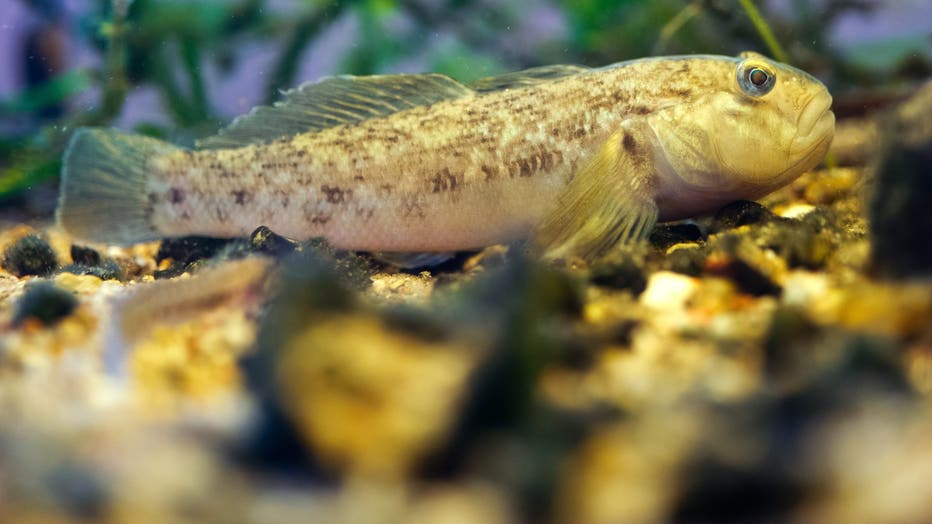
A round goby (lat. Neogobius melanostomus) swims in an aquarium at the National Park Building in Criewen, Germany, 23 September 2013. Fisher Helmut Zahn made an important discovery in the Oder River in the Unteres Odertal National Park. The round gob
Species type: Fish
Continent of origin: Eurasia
How it was introduced: Ballast water
Round goby is an aggressive fish that pursues habitats similar to native logperch fish and mottled sculpin. It's also led to cancellations of fishing season of some other fish species due to round goby's predation of eggs.
Goby are also known to have stolen bait off of fishing lines, which can hurt recreational fishing.
White Perch

White Perch, White Perch (Morone Americana). (Photo By Encyclopaedia Britannica/UIG Via Getty Images)
Species type: Fish
Continent of origin: North America
How it was introduced: Migrated through canal
White perch were the only species on the list to have negligible impacts on environmental health. But they are known to eat native fish species eggs alongside round goby.
Where white perch create the biggest issues is their mixing of genes among native fish populations. White perch can hybridize with other species, such as white bass.

